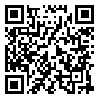Introduction: The aim of this study was to get to a neurological evaluation of one of the Persian music scales, Homayoun, on brain activation of non-musician subjects. We selected this scale because Homayoun is one of the main scales in Persian classical music which is similar to minor mode in western scales. Methods:
This study was performed on 19 right handed subjects, Aging 22-31. Here some pieces from Homayoun Dastgah are used in both rhythmic and non-rhythmic. Result:
The results of this study revealed the brain activities for each of rhythmic and non-rhythmic versions of Homayoun Dastgah. The activated regions for non-rhythmic Homayoun contained: right and left Subcallosal Cortex, left Medial Frontal cortex, left anterior Cingulate Gyrus, left Frontal Pole and for rhythmic Homayoun contained: left Precentral Gyrus, left Precuneous Cortex, left anterior Supramarginal, left Superior Parietal Lobule, left Postcentral Gyrus. Also, we acquired amygdala area in both pieces of music. Discussion:
Based on arousal effects of rhythm and Damasio's somatic marker hypothesis, non-rhythmic Homayoun activates regions related to emotion and thinking while activity of rhythmic Homayoun is related to areas of movement and motion.
نوع مطالعه:
Original |
موضوع مقاله:
Clinical Neuroscience دریافت: 1391/1/10 | انتشار: 1390/7/23




